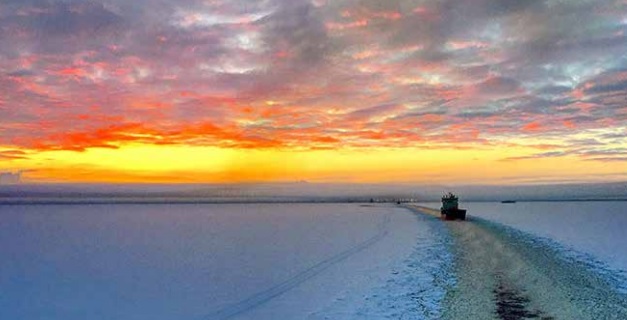The Gard P&I Club explains that collaboration between marine insurers and classification societies support the marine shipping industry in approaching the problems of potential risk of ships operating in the Arctic, among other issues. In an article posted on its website, the Club presents how the different bodies join forces to enhance safe ship operations in the Arctic.
The following diagram illustrates the relationship between the marine insurance industry and the world outside that industry-the other organizations, both governmental and non-governmental, which enhance the mission of the P&I Clubs, furthering their collective reach.

By following sound procedures, even vessels not especially ice-classed have operated safely in Arctic waters, the Club notes citing the example of cruise ship ‘Crystal Serenity’ which was accompanied by escort icebreaker, and was fitted with special ice detection equipment. There was a reprise of the voyage in 2017, arriving in New York on September 16th, after 32 days of sailing, on schedule and fortunately without incident.
On the other hand, the underestimation of the incessant risk posed by the harsh conditions of the Arctic regions may constitute a case of too much risk unintentionally assumed by a vessel operator. Sudden changes in weather and sea conditions, coupled with lack of redundancy in case of equipment failure, can result in serious consequences. There is little margin for error, even with the best of planning.
In January, 2017, the Polar Code went into effect. to address important issues that ships face in challenging conditions that the Arctic and Antarctic environment have.
”At Gard, we see the Polar Code as a definite step in the right direction, addressing the unique risks in the Arctic.”
The article concludes that marine insurers have assessed the risks and calculated how to cover them, allowing the ship operator to pay a sum certain in premium, thus quantifying the amount of risk they are willing to take in a term of 12 months. Classification societies have worked to formulate technical based rules for the design, construction, and operation of ships that can safely operate in the Arctic, based on a certain set of conditions.
This has then had the indirect influence on societal decisions on the permitting of Arctic operations within certain risk parameters. This does not mean, however, that things cannot go wrong. From time to time things have indeed gone wrong, but to date without major loss of life or environmental harm. Will that luck hold over time?
At Gard, we see the potential for ongoing Arctic activity impacts to increase, not particularly due to the periodic transits of that region (NSR, NWP), but due to increasing regular effects of oil and gas exploration, such as the activity supported by the Port of Sabetta, and more activity in Norwegian zone in the Barents Sea., the Club stated






























































